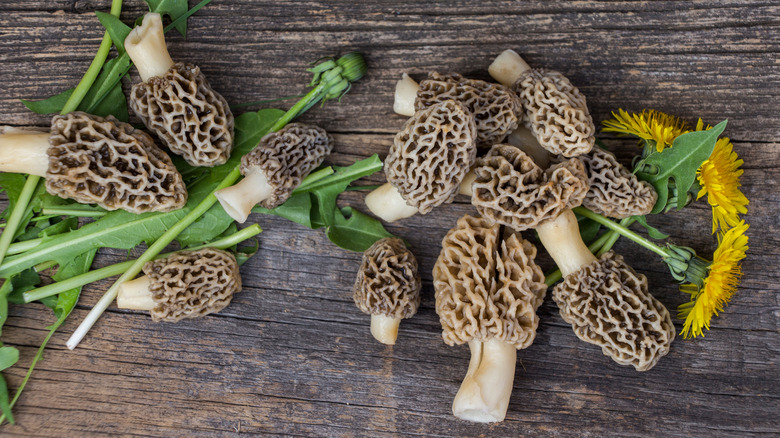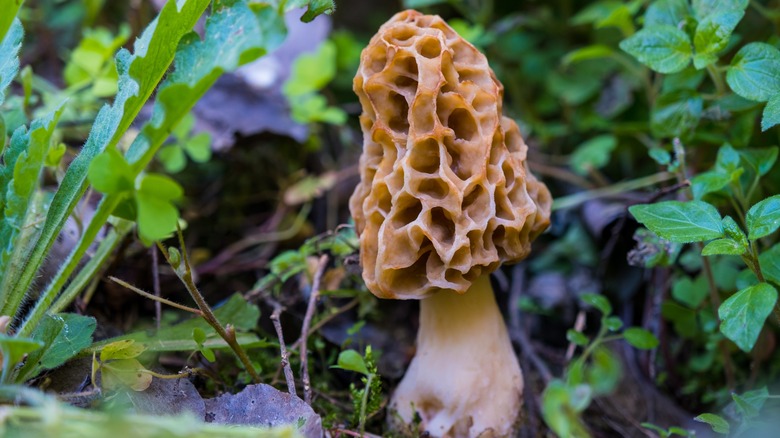What To Know Before Eating Morel Mushrooms For The First Time
Hearty and earthy, morels (also known as hickory chicken, dryland fish, merkels, or miracles) are prized by chefs and home cooks who are equally excited to seek them out each spring. Minnesotans are so enthusiastic about morels that they were the first in the country to name a state mushroom — and they chose the mighty morel.
If you're a fan of mushrooms but haven't delved into the world of morels, you're not alone. The spongy fungus can be challenging to find when foraging. And since morels can only be found in a short time span and are nearly impossible to cultivate, they come with a hefty price tag when purchased.
However, these meaty mushrooms are not only a luxe upgrade to your meal — they're also packed full of vitamins, minerals, antioxidants, and other nutrients. Research has also revealed that they have immune-boosting and anti-inflammatory properties.
So what else do you need to know before trying morels?
Finding them
If you're looking to forage morels on your own, you need to know how, where, and when to find them. On the East Coast of the United States, particularly in the mid-Atlantic region, April and May are the best bets for sourcing the 'shrooms. On the West Coast, the season can last far longer, stretching from March into August.
While out hunting for morels, you'll want to look for the honeycomb-shaped mushrooms near trees like ash, elm, aspen, poplar, cottonwood, oak, and apple. They can be both light and darker colored and are often hard to spot on the forest floor where they grow. It's often recommended that first-time foragers for morels seek out assistance from an expert, as morels are one of many mushrooms that have poisonous look-alikes.
If foraging in the forest doesn't turn up the results you'd like, there is still hope — turn to a specialty grocer or local farmers' market for fresh morels. When buying fresh morels, look for those that are plump and not too dry or soft to ensure that they are, indeed, fresh. If you're a fan of earthier, nuttier flavors, go with the darker varieties.
You may also be able to find the elusive mushrooms frozen or dried, either in a store or online.
How to use morels
Once you've either foraged or purchased morels, you'll want to use them as quickly as you can. Their hollow center contributes to quick deterioration.
Before cooking or storing, be sure to rinse the morels well with cold water. If they're particularly dirty, you can also soak them in a combination of salt and water and then rinse them. Then, dry them as quickly as possible to avoid water absorption, store them in a paper bag, and use them within a few days. If you don't intend to cook them quickly, you can store them for up to a week in the fridge or dry them and store them for up to six months in an airtight container.
Since eating morels raw can cause an upset stomach, be sure to cook them fully. The woodsy-flavored fungi are the star of their own show when simply sauteed or breaded and fried, but they are also a perfect pairing with potstickers, proteins, and savory crepes. They also add incredible umami flavor to sauces, soups, and stews. However you choose to prepare these savory 'shrooms, the way they elevate your meal will be worth the work to find them.


